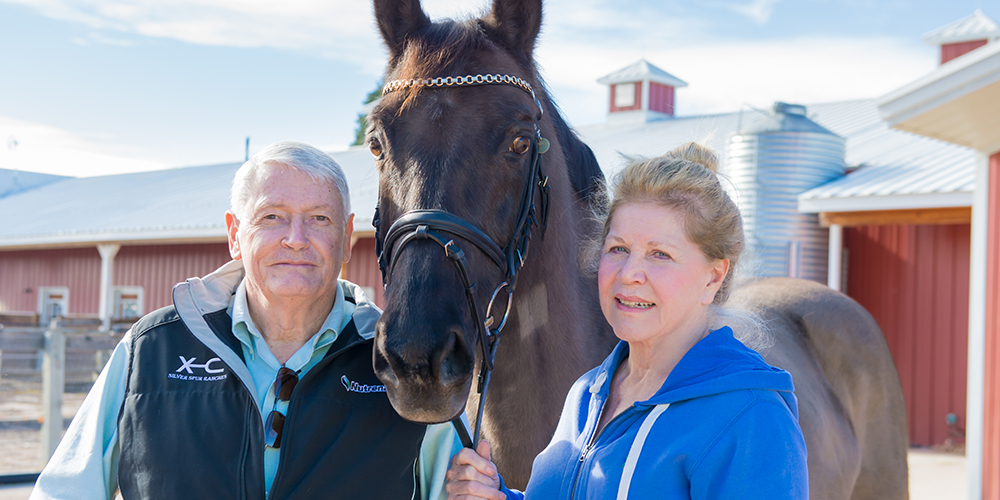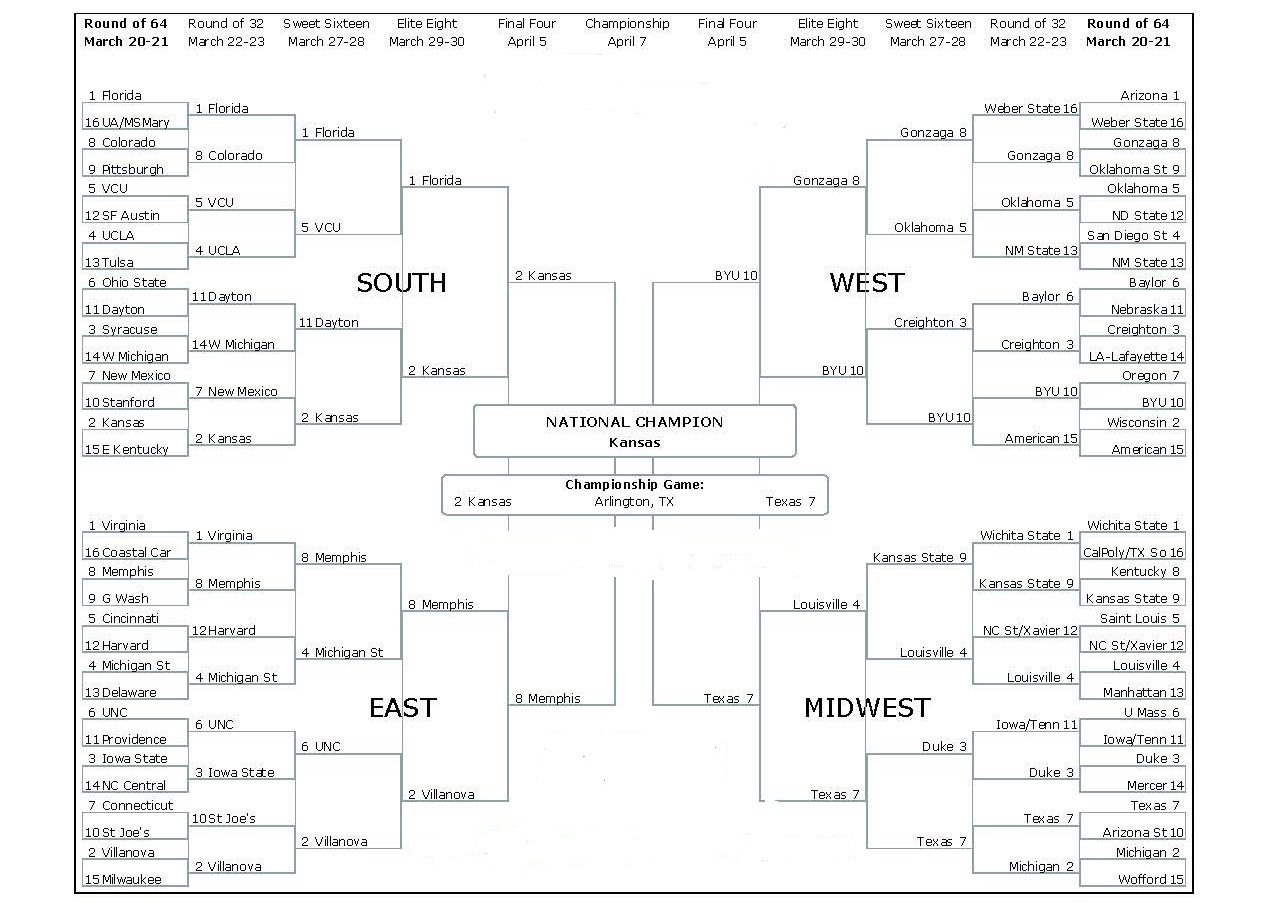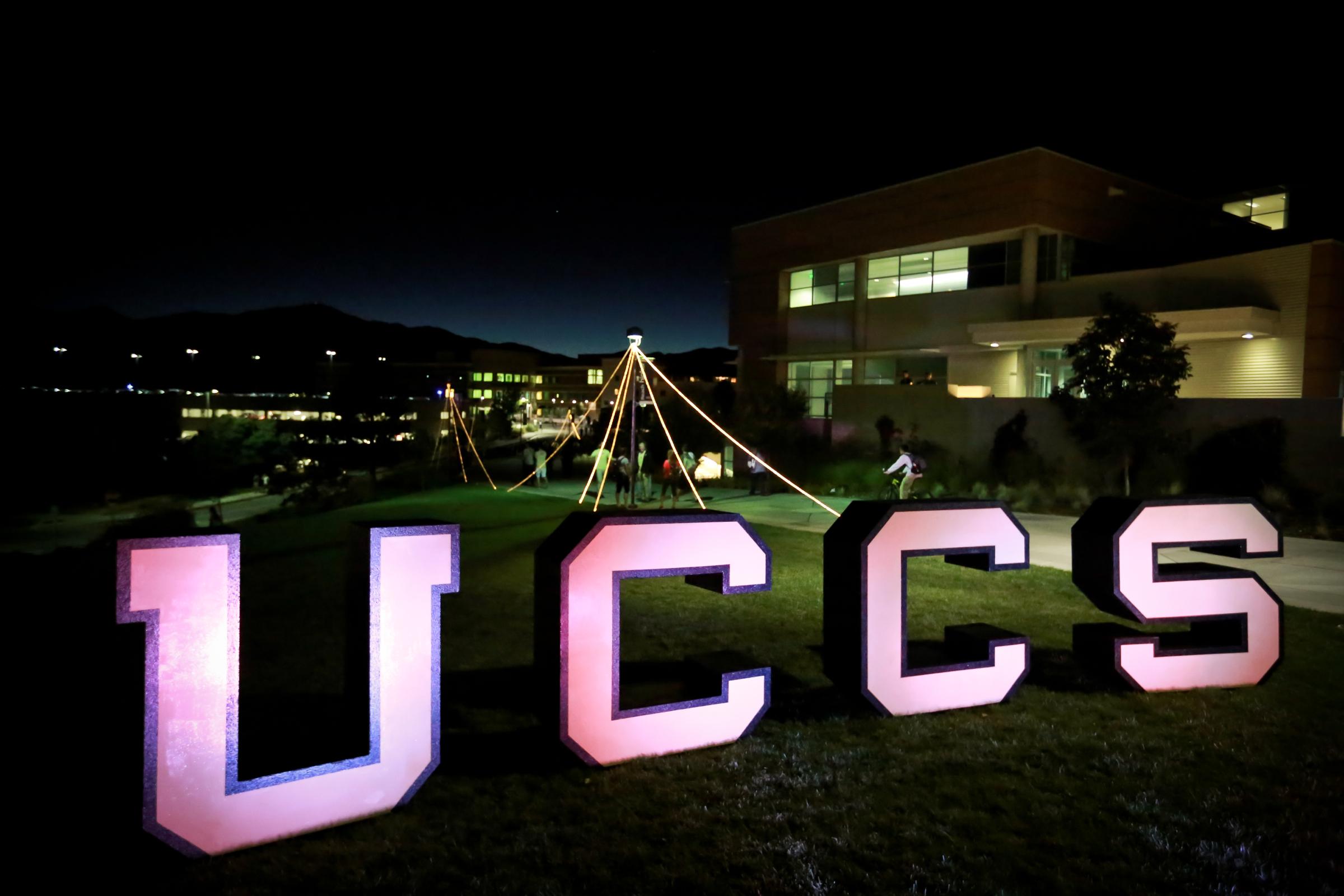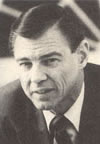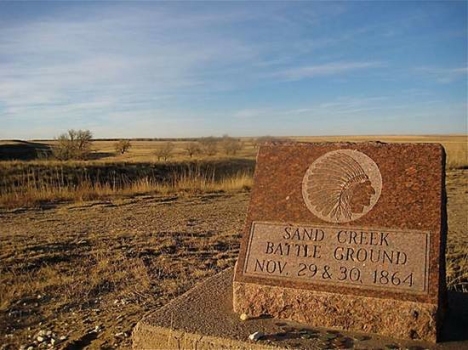From the New York Times:
Many people think of the Civil War and America’s Indian wars as
distinct subjects, one following the other. But those who study the
Sand Creek Massacre know different.
On
Nov. 29, 1864, as Union armies fought through Virginia and Georgia,
Col. John Chivington led some 700 cavalry troops in an unprovoked attack
on peaceful Cheyenne and Arapaho villagers at Sand Creek in Colorado.
They murdered nearly 200 women, children and older men.
Sand
Creek was one of many assaults on American Indians during the war, from
Patrick Edward Connor’s massacre of Shoshone villagers along the
Idaho-Utah border at Bear River on Jan. 29, 1863, to the forced removal
and incarceration of thousands of Navajo people in 1864 known as the
Long Walk.
In
terms of sheer horror, few events matched Sand Creek. Pregnant women
were murdered and scalped, genitalia were paraded as trophies, and
scores of wanton acts of violence characterize the accounts of the few
Army officers who dared to report them. Among them was Capt.
Silas Soule,
who had been with Black Kettle and Cheyenne leaders at the September
peace negotiations with Gov. John Evans of Colorado, the region’s
superintendent of Indians affairs (as well as a founder of both the
University of Denver and Northwestern University). Soule publicly
exposed Chivington’s actions and, in retribution, was later murdered in
Denver
.
After
news of the massacre spread, Evans and Chivington were forced to resign
from their appointments. But neither faced criminal charges, and the
government refused to compensate the victims or their families in any
way. Indeed, Sand Creek was just one part of a campaign to take the
Cheyenne’s once vast land holdings across the region. A territory that
had hardly any white communities in 1850 had, by 1870, lost many
Indians, who were pushed violently off the Great Plains by white
settlers and the federal government.
These
and other campaigns amounted to what is today called ethnic cleansing:
an attempted eradication and dispossession of an entire indigenous
population. Many scholars suggest that such violence conforms to other
20th-century categories of analysis, like settler colonial genocide and
crimes against humanity.
Sand
Creek, Bear River and the Long Walk remain important parts of the Civil
War and of American history. But in our popular narrative, the Civil
War obscures such campaigns against American Indians. In fact, the war
made such violence possible: The paltry Union Army of 1858, before its
wartime expansion, could not have attacked, let alone removed, the
fortified Navajo communities in the Four Corners, while Southern
secession gave a powerful impetus to expand American territory westward.
Territorial leaders like Evans were given more resources and power to
negotiate with, and fight against, powerful Western tribes like the
Shoshone, Cheyenne, Lakota and Comanche. The violence of this time was
fueled partly by the lust for power by civilian and military leaders
desperate to obtain glory and wartime recognition.
Expansion
continued after the war, powered by a revived American economy but also
by a new spirit of national purpose, a sense that America, having
suffered in the war, now had the right to conquer more peoples and
territories.
The
United States has yet to fully recognize the violent destruction
wrought against indigenous peoples by the Civil War and the Union Army.
Connor and Evans have cities, monuments and plaques in their honor, as
well as two universities and even Colorado’s Mount Evans, home to the
highest paved road in North America.
Saturday’s
150th anniversary will be commemorated many ways: The National Park
Service’s Sand Creek Massacre Historic Site, the descendant Cheyenne and
Arapaho communities, other Native American community members and their
non-Native supporters will commemorate the massacre. An annual memorial
run will trace the route of Chivington’s troops from Sand Creek to
Denver, where an evening vigil will be held Dec. 2.
The
University of Denver and Northwestern are also reckoning with this
legacy, creating committees that have recognized Evans’s culpability.
Like many academic institutions, both are deliberating how to expand
Native American studies and student service programs. Yet the
near-absence of Native American faculty members, administrators and
courses reflects their continued failure to take more than partial
steps.
While
the government has made efforts to recognize individual atrocities, it
has a long way to go toward recognizing how deeply the decades-long
campaign of eradication ran, let alone recognizing how, in the face of
such violence, Native American nations and their cultures have survived.
Few Americans know of the violence of this time, let alone the
subsequent violation of Indian treaties, of reservation boundaries and
of Indian families by government actions, including the half-century of
forced removal of Indian children to boarding schools.
One
symbolic but necessary first step would be a National Day of Indigenous
Remembrance and Survival, perhaps on Nov. 29, the anniversary of Sand
Creek. Another would be commemorative memorials, not only in Denver and
Evanston but in Washington, too. We commemorate “discovery” and
“expansion” with Columbus Day and the Gateway arch, but nowhere is there
national recognition of the people who suffered from those
“achievements” — and have survived amid continuing cycles of
colonialism.
Another informative essay by Allen Best from the
Boulder Daily Camera:
On the 150th anniversary of
the Sand Creek Massacre, an effort is underway to scrub Colorado maps of
the name Chivington. Longmont did so in 2004, replacing Chivington
Drive with the cheerier name of Sunrise.
But there's still a Chivington in Colorado. Located near the massacre
site 180 miles southeast of Denver, it consists of a handful of
buildings, most of them losing steadily to the winds, the sun, and
gravity itself. Even the post office was abandoned in the 1980s. The
road sign looks sturdy enough, but a petition launched at
change.org by Victoria S. LeftHand of St. Louis would assign a new, undetermined name.
John Chivington, the namesake, lingers as one of Colorado's most
perplexing, heartburn-inducing individuals. Arriving in the Colorado
gold camps as a Methodist preacher, the stocky, 250-pound Chivington was
an ardent abolitionist, believing fervently in the wrongness of human
slavery. In New Mexico, at the Battle of La Glorietta Pass in 1862, he
became a hero as leader of the Colorado militia that scuttled Texan
Confederates who intended to gain control of the Rocky Mountain gold
camps.
Conflicts with tribes of the Great Plains presented a more nuanced
challenge. The Cheyenne and Arapahoe, new to the region themselves as of
about 1820, led nomadic lives revolving around movement of bison herds
and bloody skirmishes with other tribes, the Utes and the Pawnees. In
contrast, they amiably accepted fur traders in places like Bent's Fort
and Fort Lupton and, for a time, did so with the gold-seekers.
It's hard to pin down who flung the first stone. Perhaps conflict was
inevitable as up to 100,000 people crisscrossed the Great Plains. A
Sioux massacre of settlers in Minnesota heightened tensions. In Denver,
ruffians raped Indian women. The U.S. Army set out to punish
wrong-doers. Cheyenne and Arapahoe responded with revenge. By 1864,
there was enough fear that settlers in Boulder had dug trenches. Display
of the mutilated bodies of the Hungate family, massacred 40 miles east
of Denver by a band of young Arapahoe men, put frontier camps even more
on edge.
Fear abounded. So did hunger. Wagons hauling supplies were less secure, while Indians found their nomadic hunting constricted.
Chivington may have hoped that another major military victory would
send him to Congress. What the historical record more clearly documents
is that he had no patience for efforts to secure a peaceful outcome. As
the top military commander in Colorado, he wanted to teach the Cheyenne
and Arapahoe a lesson before the 100-day enlistments of many of his
soldiers expired. For this he chose an easy target, what one of his
subordinates later called the "only peaceful Indians in the country."

Col. John M. Chivington became Colorado's most controversial villain after the Sand Creek Massacre in 1864. (historical / The Denver Post)
After an all-night, 40-mile march from Fort Lyon on the Arkansas
River, the 700 cavalrymen attacked the lodges of Arapahoe and Cheyenne
at dawn on Nov. 29, 1864. By one estimate, 150 Indians, including women
and children, died that day. They had assembled at Sand Creek believing
they had been assured safety through the winter.
Several people had led them to believe in a peaceful outcome. One was
Edward "Ned" Wynkoop, who is remembered by Wynkoop Street in Denver's
LoDo district. He was the first sheriff for Denver, a bit of a rowdy
himself when young, but by 1864 an Army commander at Fort Lyon. While he
harbored deep prejudice against the natives of the plains as
"childlike," circumstance and courage had allowed him to glimpse their
humanity.

Chief
Little Robe's family were among those at the Sand Creek Massacre.
Little Robe's father, also called Little Robe, was among the dead. (Denver Public Library, Western History and Genealogy Collection / The Denver Post)
Wynkoop led several of the Indians to Denver to talk with Chivington
and territorial Gov. John Evans in September 1864. He had pledged safe
harbor in southeast Colorado through the winter. Deemed entirely too
conciliatory with the Indians by his military superior, he was
reassigned to a post in Kansas.
John Evans is remembered across the Colorado landscape, with a
mountain, a town, and an avenue in Denver, for starters. If his life was
one of many good deeds, his leadership in the events leading up to Sand
Creek was questionable. He saw punishment, not peace, as the only
possible outcome, and was guided by fear, not understanding, tacitly
allowing the injustice of Sand Creek to occur. Later, after the evidence
was presented to Congress, he was replaced as governor.
Perhaps more damning, in September, the University of Denver — which
Evans founded — released a scathing report that finds he created the
conditions that led to the Sand Creek Massacre.
In Colorado Springs, we have a street and school, Irving Howbert
Elementary, named for an early settler — and a Sand Creek soldier who
steadfastly defended the attack as justified. In Trinidad we have Sopris
Road, named after E.B. Sopris, also an unapologetic participant in the
killing.
From southeast Colorado, we have Prowers County, named after local
rancher John Wesley Prowers, who Chivington arrested as a precaution. He
feared Prowers would alert the Indians to the militia's impending
attack. They were probably right. His father-in-law, Long Bear, was a
Cheyenne who was killed in the massacre.
Near the massacre site east of Eads, we have White Antelope Road, for
a Cheyenne chief killed at Sand Creek. He had been to Washington D.C.
the year before to meet with Abraham Lincoln. Another victim was Left
Hand, whose name lingers in the creek that trickles from the foothills
near Boulder. He was also called Niwot.
For the last two Novembers, I have traveled to Sand Creek, to feel
the cold bite of dawn, to pinch the soil where this blood ran, to whiff
the acrid scent of burning sage offered by the Cheyenne who return each
year to remember. Last year, at the fairgrounds pavilion in Eads, I ate
turkey provided all of us by local residents.
Sand Creek poses so many questions. Could American settlement
occurred without these and the other grisly killings? What does it tell
us about our wars today, our fears and hatreds? When revenge and
punishment are the only answers, what does that gain us?
And how do you explain how individuals reacted differently?
Chivington was an ardent abolitionist, and so was his one-time chief
aide, Silas Soule, who in the run-up to the Civil War had conspired to
free John Brown before his hanging at Harper's Ferry. But Soule objected
strenuously against the impending attack of Sand Creek as unjustified,
while Chivington called for blood to flow, be that of women and
children.
Jeff C. Campbell, an independent historical investigator who lives
near Sand Creek, says the difference was that Soule and Wynkoop, who had
also tried to look for avenues to peace, had spent time with the
Indians. Doing so was an epiphany, seeing them as people. "They
understood them as human beings," he says.
Silas Soule died soon after Sand Creek. After testifying against
Chivington, he was killed one night in April 1865 in Denver, possibly as
retribution for his testimony. In 2012, a plaque was erected on the
building at the corner of 15th and Arapahoe to designate the location of
his death. He is buried in Riverside Cemetery, along the South Platte
River.
Black Kettle was another would-be agent of peace. He had imperfectly
tried to lead the Cheyenne whom he influenced to figure out a way to
accommodate themselves to the vast changes underway on the Great Plains.
At Sand Creek, as the cavalry prepared to attack, he had ran from his
lodge and hoisted an American flag while assuring his followers that
they would not be harmed. Somehow he survived Sand Creek and rescued his
wife, who had been shot several times, but also survived.
Together,
they died almost four years to the day later at an encampment along the
Washita River in Oklahoma. Leading the attack was Gen. George Custer.
My own small proposal to effect healing involves remembering Silas
Soule and Black Kettle. With our highway names, we remember Gerald Ford
through Vail, Ronald Reagan through Colorado Springs, and the 10th
Mountain Division from Minturn to Leadville.
Might Colorado do something similar, but recognizing the agents of
peace, putting the names of Black Kettle and Silas Soule on U.S. 287?
That highway passes near the massacre site and through Eads,
continuing to Denver as Colfax Avenue. At Federal Boulevard it strikes
north into Wyoming. Once in Wyoming, a portion of 287 is called the Sand
Creek Massacre Memorial Trail on its way to the Wind River Reservation.
Waging peace is such a difficult process. That's the most vivid
lesson that emerges from the atrocities and injustice of Sand Creek.
This essay appeared first in the Colorado Independent. Allen Best
is a fourth-generation Coloradan who reports on water, energy and other
issues in Colorado, the Great Plains and the Intermountain West. He
blogs at mountaintownnews.net.
